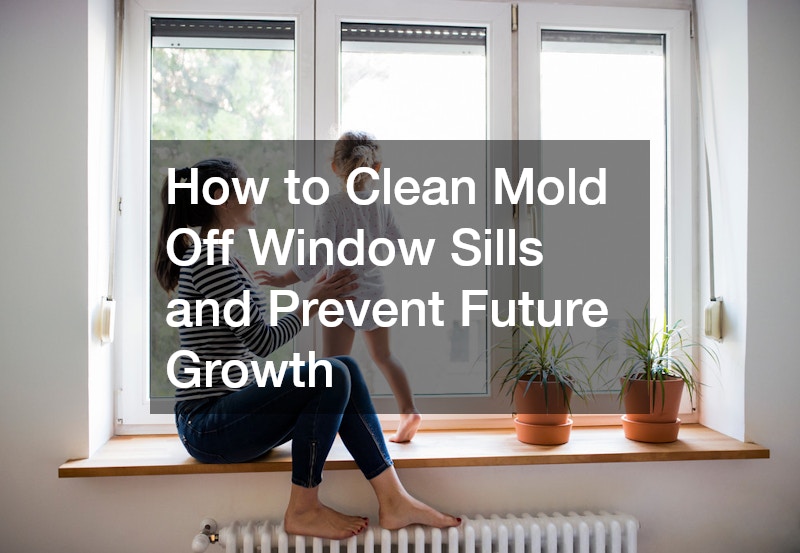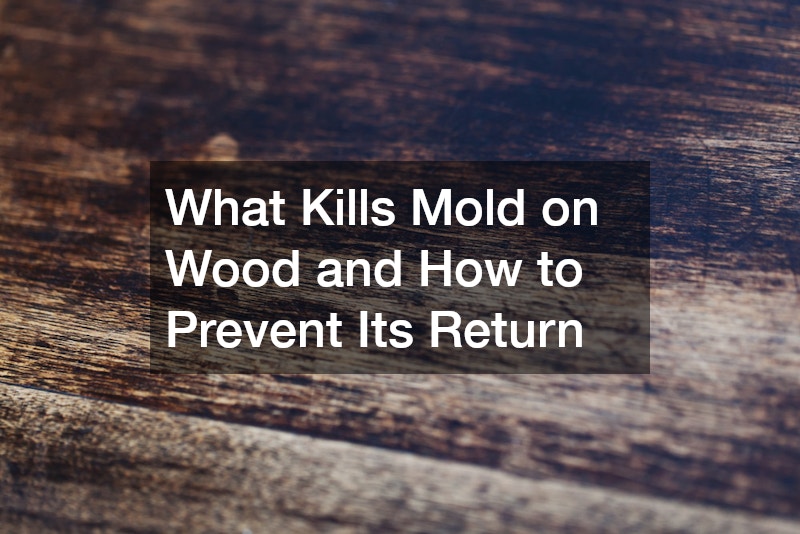Mold can be a persistent and frustrating problem, especially when it invades parts of your home like window sills. Mold is not only unsightly, but it can also pose serious health risks and damage the structural integrity of your home if left unchecked. In this comprehensive guide, we’ll walk you through how to clean mold off window sills effectively, prevent it from coming back, and maintain a mold-free environment in your home.
Table of Contents
- What Causes Mold on Window Sills?
- The Dangers of Mold in Your Home
- How to Clean Mold Off Window Sills
- Materials Needed
- Step-by-Step Process
- Preventing Mold Growth on Window Sills
- What Kills Mold on Wood: Effective Cleaning Solutions
- Dealing with Stubborn Mold: Advanced Cleaning Tips
- How to Identify Mold-Resistant Window Sill Materials
- When to Call a Professional for Mold Removal
- Preventive Maintenance Tips for Homeowners
- Conclusion
What Causes Mold on Window Sills?
Mold on window sills is primarily caused by excessive moisture. Whether from condensation, leaks, or high indoor humidity, water provides the perfect breeding ground for mold spores to thrive. Here are a few common causes of mold growth on window sills:
- Condensation: During colder months, the warm air inside your home meets the cold surface of the window, causing condensation. This moisture can accumulate on the window sills, creating an ideal environment for mold to grow.
- Leaks: Improperly sealed windows can allow water to seep through, especially during rainstorms. Leaks around the windowsill can lead to standing water, which accelerates mold growth.
- High Humidity: Homes in humid climates are particularly susceptible to mold growth. If your home’s indoor humidity levels remain consistently high, your windowsills may become damp, encouraging mold to spread.
By understanding the common causes of mold, you can better prevent it and keep your home healthy.
The Dangers of Mold in Your Home
Mold is more than just an aesthetic problem; it can also pose significant health and safety risks. Some of the dangers of mold include:
- Allergic Reactions: Mold can trigger a variety of allergic reactions, such as coughing, sneezing, runny nose, and itchy eyes. People with asthma or other respiratory conditions may experience worsened symptoms in the presence of mold.
- Respiratory Issues: Prolonged exposure to mold spores can cause serious respiratory problems, particularly in children, the elderly, and individuals with compromised immune systems.
- Structural Damage: Mold, especially when left untreated, can spread to other areas of the home and damage the structure of walls, window frames, and even floors.
- Toxic Mold: Certain types of mold, such as black mold (Stachybotrys), are toxic and can lead to more severe health issues, including neurological symptoms, fatigue, and immune system suppression.
Cleaning mold off your window sills promptly can help mitigate these risks and prevent further damage.
How to Clean Mold Off Window Sills
Now that we’ve discussed the causes and dangers of mold let’s move on to the step-by-step process for cleaning mold off window sills. Whether you have wood, metal, or vinyl window sills, this guide will provide the information you need to eliminate mold safely and effectively.
Materials Needed:
- Protective gloves
- N95 mask or respirator
- Safety goggles
- White vinegar or hydrogen peroxide
- Dish soap or mild detergent
- Baking soda (optional)
- A scrub brush or sponge
- A clean towel or paper towels
- A spray bottle
- Sealant (for wood window sills)
- Dehumidifier or fan
Step-by-Step Process:
- Prepare the Area
- Before starting the cleaning process, put on protective gear such as gloves, a mask, and safety goggles to prevent direct contact with mold spores. Proper ventilation is essential, so open windows to allow fresh air to circulate.
- Wipe Away Loose Mold
- Use a dry paper towel or rag to gently remove any loose mold from the surface. Be cautious to avoid spreading mold spores into the air.
- Apply Cleaning Solution
- Mix equal parts of white vinegar or hydrogen peroxide in a spray bottle. Both solutions are effective at killing mold and are safe to use on various surfaces, including wood.
- Spray the affected area generously and allow the solution to sit for 10 to 15 minutes. This will help break down the mold and disinfect the surface.
- Scrub the Mold
- Use a scrub brush or sponge to clean the mold off the window sill. For stubborn spots, you can add a bit of baking soda to the cleaning solution to increase its abrasiveness.
- Make sure to scrub all corners and crevices, as mold can hide in these hard-to-reach areas.
- Rinse and Dry the Area
- After scrubbing, wipe the surface with a clean, damp rag to remove any remaining residue. Dry the window sill completely with a towel to prevent moisture from lingering.
- Seal Wooden Sills (Optional)
- If your window sills are made of wood, consider applying a sealant once the area is completely dry. Sealing the wood helps protect it from future moisture exposure, which in turn prevents mold growth.
Preventing Mold Growth on Window Sills
Once you’ve successfully cleaned the mold off your window sills, taking steps to prevent future growth is essential. Here’s how you can keep mold from coming back:
1. Control Humidity Levels
Maintaining indoor humidity levels between 30% and 50% is ideal for mold prevention. You can use a dehumidifier to control humidity, particularly in rooms prone to moisture like kitchens, bathrooms, and basements.
2. Regularly Clean and Dry Windows
Regularly wipe down your window sills and the surrounding areas to remove dust, dirt, and moisture. Pay special attention to cleaning windows in rooms where condensation is common.
3. Improve Ventilation
Proper ventilation is key to preventing mold. Make sure your home is well-ventilated, particularly in areas prone to dampness, such as bathrooms, kitchens, and laundry rooms. Use exhaust fans when cooking, showering, or doing laundry.
4. Repair Leaks Promptly
Fix any window leaks or gaps in the seals to prevent water from seeping into your home. Check the integrity of your windows after heavy rainfall or snowmelt, and address any issues immediately.
What Kills Mold on Wood: Effective Cleaning Solutions
When dealing with mold on wooden surfaces, using the right cleaning solutions is crucial to ensuring that the mold is completely eliminated and doesn’t return.
- White Vinegar: White vinegar is a natural antifungal agent and one of the most effective cleaners for killing mold. Its acidic nature works to break down the mold at the root.
- Hydrogen Peroxide: Like vinegar, hydrogen peroxide is an effective mold killer. It is best used on wood and other porous surfaces, as it can penetrate deeper into the material.
- Baking Soda: A baking soda and water solution is a gentle abrasive that can scrub away mold without damaging delicate surfaces. Baking soda also helps to deodorize the area, which can be helpful in removing musty mold smells.
- Borax: Borax is a strong natural cleaning agent that works well against mold. It is a less abrasive solution than bleach, making it a safer option for wooden surfaces.
When considering what kills mold on wood, it’s important to opt for solutions that won’t damage the material while still effectively eliminating mold spores.
Dealing with Stubborn Mold: Advanced Cleaning Tips
While most mold can be cleaned with basic solutions like vinegar and hydrogen peroxide, there are times when more advanced cleaning techniques may be necessary. Here’s how to deal with stubborn mold that won’t go away:
- Use Borax for Tough Mold: For particularly stubborn mold growth, a solution of borax and water can be used. Apply the solution to the moldy area, scrub thoroughly, and leave it to dry without rinsing. This allows the borax to continue working against the mold.
- Consider Bleach for Severe Cases: In extreme mold cases, you can use a diluted bleach solution (1 cup bleach to 1 gallon of water) to disinfect the area. However, bleach can be harsh on wood and should be used cautiously.
- Apply Mold-Resistant Paint: Once the mold is removed, consider applying mold-resistant paint to the window sills. This can provide an extra layer of protection and prevent mold from returning.
How to Identify Mold-Resistant Window Sill Materials
To reduce the chances of mold growth, choosing the right materials for your window sills is important. Certain materials are more resistant to mold than others:
- Vinyl: Vinyl window sills are highly resistant to moisture and easy to clean, making them a great choice for mold prevention.
- Aluminum: Aluminum sills are also moisture-resistant and require minimal maintenance, making them a mold-resistant option.
- Composite Materials: Some homeowners opt for composite window sills made from a combination of wood and plastic. These materials are durable and less prone to mold.


Leave a Reply